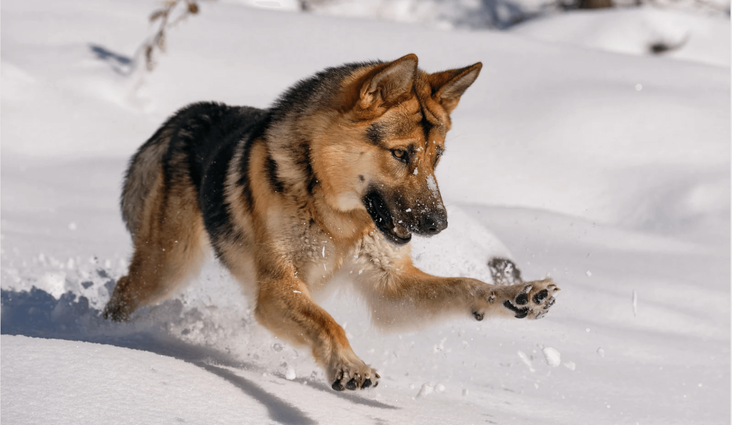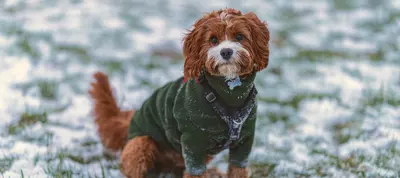Do Dogs Like Snow?
- 31 Jan 2024
- 3m read

Love of snow varies from dog to dog. Whilst some revel in a fresh blanket of snow, others would rather stay inside and keep warm.
Generally, most dogs find joy in playing in snow as it is new and exciting. Breeds with thicker coats, such as German Shepherds, are more likely to want to play in snow for long periods. Those on the smaller side, such as Chihuahuas, may wonder if you've gone mad as you step outside.
Why Do Dogs Love Snow?
Dogs, being naturally playful and curious, find the snowy landscape to be an enticing and stimulating environment. The soft, cold texture beneath their paws provides a sensory experience that invites them to partake in various activities. The cool temperature of the snow adds an element of refreshment, particularly for dogs with thick fur coats.
Is Snow Safe for Dogs?
While dogs generally revel in the snow, responsible pup ownership involves ensuring their safety and well-being during winter escapades. We recommend equipping your dog with a cosy, insulated coat to protect them from extreme cold. Limit their exposure to extreme temperatures to prevent potential harm, and pay close attention to signs of irritation or frostbite on their paws.
Post-adventure, it's essential to dry them off and wipe their paws clean.
Do Dogs Feel Cold in Snow?
Dogs have a remarkable ability to regulate their body temperature, thanks to their fur coats and a layer of fat beneath their skin.
However, similar to humans, they can feel the cold, particularly in extreme conditions. Observing your dog for signs of discomfort, such as shivering or lifting their paws, is crucial.
Walking Dogs in Snow
Taking your dog for a walk in the snow can be a delightful and bonding experience. Yet, precautions are necessary to ensure their safety.
Using a lead is recommended to prevent your dog from straying too far or encountering potential hazards. Choose cleared pathways to avoid icy surfaces that may cause slips, and revel in the joy of a winter stroll with your four-legged friend.
Caring for Your Dog’s Paws in Snow and Ice
Although dogs' paws are a lot tougher than our feet, imagine if we had to take a walk barefoot in the snow. They would be in much need of a pamper afterwards. Our dog’s paws aren't so different in this respect and caring for them should not be underestimated.
Regular paw checks
After each snowy adventure, inspect your dog's paws for signs of irritation, cuts, or frostbite. Snow can conceal sharp objects or icy surfaces that may pose risks to your dog's sensitive paw pads.
Moisturise paw pads
Exposure to cold and snow can lead to dry, cracked paw pads. Consider applying a pet-safe paw balm to keep their pads moisturised and protected.
Trim excess fur
Long hair between your dog's paw pads can collect ice, snow, and salt, causing discomfort. Trim any excess fur to prevent these issues and make it more comfortable for your dog to walk in the snow.
Use protective booties
Investing in dog booties can provide an extra layer of protection against the cold and potential harmful substances on the ground. Ensure the booties fit well and allow your dog to move comfortably.
Be mindful of rock salt
Rock salt, otherwise known as grit, is used to de-ice roads in the event of snow and ice. It is important to make sure that your dog does not ingest any rock salt, as it can lead to irritation of the gastrointestinal tract and, in severe cases, poisoning of the kidneys and brain.
Ingestion of rock salt often happens by accident, it can get lodged in dogs paws and when they try to dislodge it they actually end up swallowing it. So, it is crucial to check their paws after a snowy walk.




